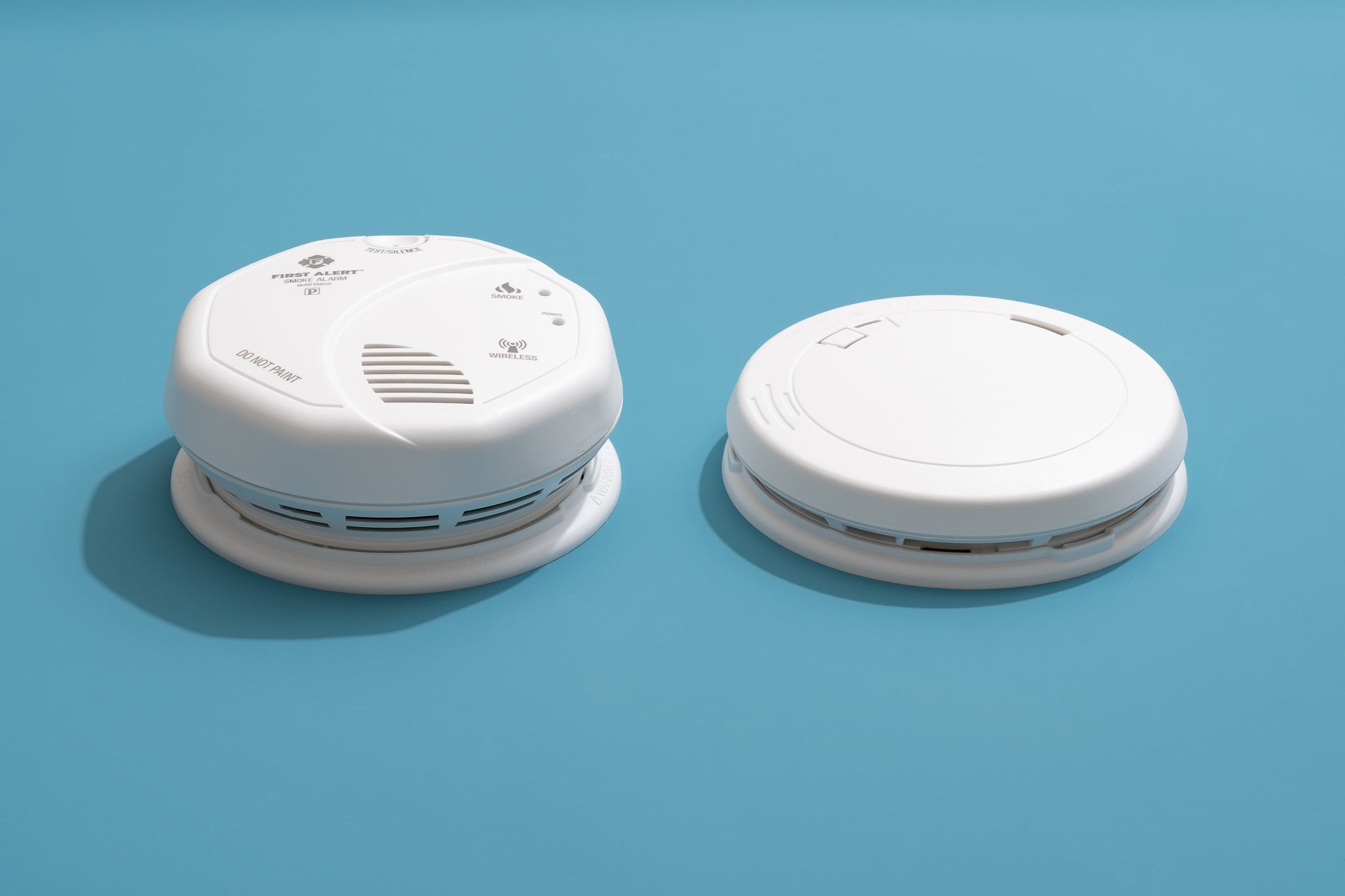

Articles
How Many Amps Does A Smoke Detector Use
Modified: August 22, 2024
Discover how many amps a smoke detector uses in this informative article. Find out the power consumption of smoke alarms and understand their electrical requirements.
(Many of the links in this article redirect to a specific reviewed product. Your purchase of these products through affiliate links helps to generate commission for Storables.com, at no extra cost. Learn more)
Introduction
Smoke detectors play a crucial role in safeguarding our homes and alerting us to potential fire hazards. These devices are designed to detect smoke particles in the air and emit loud alarm sounds to give us ample time to evacuate and seek help. But have you ever wondered how smoke detectors draw power to function? Specifically, how many amps do they use?
Understanding the power usage of smoke detectors is important, especially when it comes to choosing the right power source and ensuring their optimal performance. In this article, we will delve into the world of smoke detector power consumption, exploring the factors that influence amp usage for both battery-powered and hardwired smoke detectors.
Key Takeaways:
- Understanding the amp usage of smoke detectors is crucial for maximizing battery life, reducing costs, and ensuring reliable fire detection. By managing amp usage effectively, users can optimize the performance and longevity of these essential safety devices.
- Battery-powered and hardwired smoke detectors offer unique advantages, but both require proper maintenance and consideration of factors affecting power consumption. Balancing power efficiency and safety is essential for reliable fire detection and early warning systems.
Read more: How Many Amps Does An HVAC Use
The Purpose of Smoke Detectors
Smoke detectors are vital safety devices installed in homes, offices, and various other buildings. Their primary function is to detect the presence of smoke, which is often an early indication of a fire. By promptly detecting and alerting occupants to the presence of smoke, smoke detectors provide valuable time to escape and seek help.
Fires can ignite and spread rapidly, filling the surrounding environment with toxic smoke and flames. In such situations, it is crucial to have early warning systems in place to mitigate the risks. Smoke detectors serve as the first line of defense by quickly identifying the presence of smoke, triggering an alarm that can wake people up from sleep or alert them to danger when they are awake.
The primary purpose of smoke detectors is to save lives. According to the National Fire Protection Association (NFPA), three out of five home fire deaths occur in properties without functioning smoke detectors. These statistics highlight the critical role that these devices play in preventing fatalities and reducing property damage.
Smoke detectors are particularly important at night when people are most vulnerable to fire hazards. As we sleep, our sense of smell is not as sharp, making it difficult to detect smoke. Smoke detectors, with their sensitive sensors, provide an extra layer of protection by detecting and warning us of smoke before it becomes life-threatening.
In addition to the early detection of fires, smoke detectors also serve as a deterrent. The loud alarms they emit can startle potential arsonists or prevent small fires from escalating. This deterrent effect helps to minimize losses and property damage.
Overall, the purpose of smoke detectors is to save lives, protect property, and provide valuable time for evacuation. By detecting smoke and sounding alarms, they serve as vigilant guardians, ensuring that we are alerted to potential fire hazards and allowing us to take swift action to protect ourselves and our loved ones.
Basic Components of a Smoke Detector
Smoke detectors are comprised of several key components that work together to detect the presence of smoke and trigger an alarm. Understanding these components is essential in comprehending how smoke detectors function and draw power.
1. Smoke Sensor: The smoke sensor is the heart of a smoke detector. It is a small chamber with two ports through which air flows. Inside the chamber, there is a light source, often an infrared LED, and a photosensitive receiver. When smoke particles enter the chamber, they scatter the light, triggering the detector to sound the alarm.
2. Alarm System: The alarm system is responsible for emitting a loud sound when smoke is detected. This can be in the form of a shrill beep, a piercing siren, or a recorded voice message. The purpose of the alarm system is to alert occupants to the presence of smoke and prompt them to take immediate action.
3. Battery or Power Source: Smoke detectors can either be battery-powered or hardwired with a direct electrical connection. Battery-powered smoke detectors rely on batteries as their primary power source, while hardwired detectors are connected to the building’s electrical system.
4. Control Unit: The control unit serves as the brain of the smoke detector. It monitors the signals from the smoke sensor, processes the information, and triggers the alarm when necessary. The control unit may also have additional features, such as a test button to ensure proper functioning and a hush button to temporarily silence the alarm.
5. Indicator Lights: Many smoke detectors have indicator lights that provide visual cues to indicate the status of the device. These lights can show whether the detector is operating correctly, has a low battery, or is in a fault condition that requires attention.
6. Mounting Base: The mounting base is the platform on which the smoke detector is installed. It allows for easy installation and removal of the device for maintenance or battery replacement.
These are the fundamental components of a smoke detector. Each component plays a crucial role in the functioning and power usage of the device. Whether battery-powered or hardwired, understanding the basic components can help users make informed decisions about their smoke detector needs and ensure optimal performance in detecting smoke and alerting occupants to potential fire hazards.
Power Source for Smoke Detectors
Smoke detectors require a power source to operate and ensure continuous monitoring for the presence of smoke. There are two primary power sources for smoke detectors: batteries and direct electrical connections.
1. Battery-Powered Smoke Detectors: Battery-powered smoke detectors are the most common type found in homes and buildings. They are easy to install and function independently of the building’s electrical system. These detectors are typically powered by long-lasting lithium batteries or 9-volt alkaline batteries. The batteries provide the necessary power to operate the smoke sensor, control unit, and alarm system.
Battery-powered smoke detectors are advantageous as they continue to function during power outages, ensuring uninterrupted fire detection. It is crucial to regularly check and replace the batteries to maintain the detector’s effectiveness. Most detectors have a low battery indicator that emits a periodic chirping sound to alert users when the battery needs replacement.
2. Hardwired Smoke Detectors: Hardwired smoke detectors are directly connected to the building’s electrical system, typically through electrical wiring. These detectors may have backup batteries in case of power failure. The electrical connection ensures a constant power supply to the detector, eliminating the need to replace batteries regularly.
Hardwired smoke detectors are often interconnected, meaning that when one detector detects smoke, all interconnected detectors sound the alarm simultaneously. This interconnected feature provides enhanced safety as occupants are alerted throughout the building, increasing the chances of a prompt evacuation.
It is essential to ensure that hardwired smoke detectors are installed by a qualified electrician to adhere to electrical safety guidelines. Regular testing and maintenance are necessary to ensure optimal performance and reliability.
In some cases, smoke detectors may have hybrid power sources, combining both battery and hardwired connections. These detectors use the electrical connection as the primary power source and rely on the backup battery during power outages or if the electrical connection is disrupted.
Regardless of the power source, it is crucial to periodically test smoke detectors to ensure they are functioning correctly. Follow the manufacturer’s instructions regarding battery replacement or maintenance to maintain the sensitivity and reliability of the smoke detector.
Choosing the right power source for smoke detectors depends on factors such as the building’s electrical infrastructure, personal preferences, and the reliability of the power supply. Ultimately, the goal is to have a functioning smoke detector that can swiftly detect smoke and alert occupants to potential fire hazards, providing valuable time to evacuate and seek assistance.
Understanding Amps and Electrical Current
Before diving into the amp usage of smoke detectors, it is essential to understand the concept of amps and electrical current. Amperes, commonly referred to as amps, is the unit of measurement for electrical current. It represents the flow rate of electric charge in a circuit.
In simple terms, electrical current is the movement of electrons through a conducting material, such as wires. When a source, such as a battery or power outlet, is connected to a circuit, it provides a voltage difference that pushes the electrons through the circuit. The intensity or quantity of electrons flowing through the circuit is measured in amps.
The amp rating indicates the maximum amount of current that a device or circuit can safely handle. Different electrical appliances and devices come with different amp ratings based on their power requirements and electrical characteristics. Understanding amp ratings is crucial in ensuring that the electrical system is not overloaded, which can lead to overheating, circuit damage, or even electrical fires.
In the context of smoke detectors, amp usage refers to the amount of electrical current drawn by the device during its operation. This current is typically measured in milliamps (mA) or microamps (µA), as smoke detectors generally consume minimal power to extend battery life and maintain continuous surveillance for smoke.
Most smoke detectors have an amp usage ranging from 5 to 60 milliamps. This low amp usage allows for prolonged battery life in battery-powered smoke detectors, ensuring that they remain operational for an extended period without the need for frequent battery replacements.
It’s important to note that the amp usage of smoke detectors may vary depending on various factors, such as the specific model, the sensitivity settings, the devices connected (in the case of interconnected hardwired detectors), and even the presence of smoke in the environment.
Properly understanding amps and electrical current helps us appreciate the power requirements and efficiency of electrical devices, including smoke detectors. By having a basic understanding of these concepts, we can make informed decisions about the power sources, electrical systems, and maintenance required for reliable and safe operation.
Read more: How Many Amps Does Alexa Use
Amp Usage of Smoke Detectors
When it comes to the amp usage of smoke detectors, it is important to note that most smoke detectors consume very little power. The low power consumption is intentional to maximize battery life and ensure continuous surveillance for smoke detection. Typically, smoke detectors have an amp usage ranging from 5 to 60 milliamps (mA).
The specific amp usage of a smoke detector can vary depending on various factors, including the model, sensitivity settings, and the presence or absence of smoke. Some smoke detectors may have adjustable sensitivity settings, allowing users to customize the level of smoke detection required. Higher sensitivity settings may result in a slightly higher amp usage, while lower sensitivity settings may consume less power.
Battery-powered smoke detectors generally have an amp usage on the lower end of the spectrum. This is essential to extend the battery life and reduce the frequency of battery replacements. Consuming minimal power allows the detectors to operate for extended periods without compromising their ability to detect smoke and provide early warnings.
Hardwired smoke detectors, on the other hand, typically draw their power directly from the building’s electrical system. As a result, their amp usage is regulated by the electrical current supplied to them. However, it is worth noting that hardwired smoke detectors often have battery backup systems to ensure continuous operation during power outages. The amp usage for these backup batteries is usually minimal, as they only come into play when the electrical power is disrupted.
It’s worth mentioning that the amp usage of smoke detectors is not constant. When a smoke detector detects smoke particles in the air, it may activate additional features such as the alarm system, which can temporarily increase the amp usage. However, once the smoke clears and the alarm stops, the amp usage returns to its normal low level.
Overall, smoke detectors are designed to be energy-efficient, ensuring minimal amp usage to maximize battery life and maintain constant smoke detection capabilities. Regularly testing and maintaining smoke detectors, along with replacing the batteries as recommended by the manufacturer, will help ensure optimal performance and reliability.
By understanding the amp usage of smoke detectors, users can make informed decisions about power sources, battery replacements, and maintenance requirements for these vital safety devices. It is important to prioritize the reliable and efficient operation of smoke detectors to ensure early detection and prompt response to potential fire hazards.
Most smoke detectors use a very small amount of current, typically around 0.09-0.15 amps. It’s important to check the specific model’s specifications for accurate information.
Factors Affecting Amp Usage
While smoke detectors generally have low amp usage, there are several factors that can affect the power consumption of these devices. Understanding these factors can help users optimize the efficiency of their smoke detectors and ensure reliable operation. Here are some of the key factors that can influence amp usage:
1. Sensitivity Settings: Smoke detectors often have adjustable sensitivity settings to accommodate different environments and minimize false alarms. Higher sensitivity settings may require more power to operate the smoke sensor and processing algorithms, resulting in slightly higher amp usage. It is important to strike a balance between sensitivity and power consumption based on the specific needs of the location.
2. Smoke Detection Frequency: The frequency at which smoke detectors detect smoke can also impact amp usage. In environments with frequent smoke events, such as kitchens or areas with high levels of dust or steam, detectors may use more power to continuously monitor and evaluate the air for smoke particles, leading to slightly higher amp usage.
3. Interconnected Detectors: In the case of hardwired smoke detectors that are interconnected, the power usage may vary depending on the number of detectors connected in the network. Additional detectors in the network may slightly increase the overall amp usage as they communicate and synchronize with each other to provide comprehensive coverage throughout the building.
4. Battery Age and Quality: For battery-powered smoke detectors, the age and quality of the battery can impact power consumption. Older or lower-quality batteries may not maintain a consistent voltage output, which can lead to increased amp usage as the detector compensates for the fluctuation. It’s important to use fresh, high-quality batteries to ensure optimal performance and minimize power consumption.
5. Environmental Conditions: Smoke detectors may experience varying amp usage depending on the environmental conditions they are exposed to. Extreme temperatures, humidity levels, and other environmental factors can impact the performance of the detector and potentially affect power consumption. It is recommended to place smoke detectors in areas with stable and moderate environmental conditions for optimal efficiency.
6. Detector Age and Maintenance: Over time, smoke detectors may accumulate dust, dirt, or other contaminants, which can impact the efficiency of the smoke sensor and increase power consumption. Regular maintenance, including cleaning and testing, can help ensure the detectors are operating optimally and using the minimum necessary power to perform their intended function.
By considering these factors and taking appropriate measures, users can minimize unnecessary amp usage and optimize the power efficiency of their smoke detectors. Following manufacturer guidelines, performing regular maintenance, and keeping the detectors free from obstructions can help ensure reliable performance while conserving power.
It’s worth noting that while amp usage is important in understanding power consumption, the primary focus should always be on the effectiveness and reliability of smoke detectors in detecting smoke and alerting occupants to potential fire hazards. Balancing power efficiency and safety is crucial in maintaining a secure environment.
Battery-Powered Smoke Detectors
Battery-powered smoke detectors are a popular choice for residential homes and small commercial spaces. These detectors offer simplicity, flexibility, and easy installation without the need for complex wiring or direct electrical connections. They rely on batteries to provide the necessary power for their operation, including smoke detection and sounding the alarm.
One of the key advantages of battery-powered smoke detectors is their versatility. They can be installed in any location without the worry of being limited by the proximity of electrical outlets or wiring requirements. This flexibility allows homeowners to strategically place detectors in different areas of the house to ensure comprehensive coverage.
Battery-powered smoke detectors typically use 9-volt alkaline batteries or long-lasting lithium batteries as their power source. Depending on the specific model and brand, these batteries can last anywhere from 1 to 10 years, providing reliable power for the detector during that time.
It is crucial to regularly check the battery status of these detectors to ensure they are functioning correctly. Most battery-powered smoke detectors have a low battery indicator that emits a periodic chirping sound, signaling the need for battery replacement. It is recommended to replace the batteries as soon as the low battery indicator is activated or at least once a year as a proactive measure.
When selecting batteries for your smoke detectors, it is important to choose high-quality and long-lasting options. Opting for reputable brands and following the manufacturer’s recommendations ensures optimal performance and reliability. Remember that the quality and age of the battery can impact the amp usage and longevity of the detector’s power supply.
Battery-powered smoke detectors provide uninterrupted protection during power outages. Even when the electrical system is down, these detectors continue to operate solely on battery power, ensuring continuous surveillance for smoke detection. This is a critical feature, as fires can occur at any time, and having functioning detectors during power outages is crucial for early detection and timely response.
Installing and maintaining battery-powered smoke detectors involves simple steps. Most detectors come with a mounting bracket and screws, allowing for easy installation on walls or ceilings. It is important to ensure that the detector is securely mounted according to the manufacturer’s instructions to ensure optimal performance.
Regular testing of battery-powered smoke detectors is necessary to ensure they are functioning correctly. Most detectors have a test button that allows users to check if the alarm system is working properly. Testing should be done at least once a month to ensure the detectors are operational and capable of alerting occupants in case of smoke detection.
In summary, battery-powered smoke detectors offer convenience, flexibility, and reliable protection. They are easy to install, work independently of the electrical system, and provide uninterrupted surveillance for smoke detection. By using high-quality batteries, regularly testing, and performing maintenance as recommended, homeowners can maximize the efficiency and effectiveness of these important safety devices.
Hardwired Smoke Detectors
Hardwired smoke detectors are an integral part of the fire detection and alarm systems in many buildings. These detectors are directly connected to the building’s electrical system, ensuring a constant power supply for their operation. Unlike battery-powered detectors, hardwired smoke detectors do not rely solely on batteries and provide a more reliable and uninterrupted surveillance for smoke detection.
One of the significant advantages of hardwired smoke detectors is their continuous power supply. Since they are connected to the electrical system, they do not depend on battery life or require regular battery replacements. This feature provides peace of mind, knowing that the detectors are always operational without worry of drained batteries.
Hardwired smoke detectors are typically interconnected, which means that when one detector senses smoke and triggers an alarm, all interconnected detectors sound the alarm simultaneously. This interconnected feature provides enhanced safety by ensuring that occupants are alerted throughout the entire building, increasing the chances of early detection and evacuation.
Installation of hardwired smoke detectors generally requires the expertise of a qualified electrician. They will connect the detectors to the electrical system through electrical wiring. It is essential to adhere to electrical safety guidelines and follow the manufacturer’s instructions during installation to ensure proper functionality and compliance with local building codes.
Hardwired smoke detectors often have backup battery systems to ensure continuous operation during power outages. These backup batteries come into play when the electrical power is disrupted, ensuring that the detectors remain functional even in emergency situations. It is crucial to regularly check and replace these backup batteries according to the manufacturer’s recommendations to maintain their effectiveness.
Maintenance of hardwired smoke detectors involves periodic testing to ensure that they are functioning correctly. Most detectors have a test button that allows users to check if the alarm system is working properly. Additionally, cleaning the detectors to remove dust and debris is important to maintain their sensitivity and optimal performance.
It is worth mentioning that hardwired smoke detectors may interconnect with other interconnected fire safety systems, such as carbon monoxide detectors or fire alarm control panels. This integration allows for a comprehensive and coordinated response to potential fire or safety hazards.
When it comes to hardwired smoke detectors, it is essential to have a clear understanding of the electrical system and follow local building codes and regulations. Consulting with a professional electrician during the installation and maintenance process ensures that the detectors are properly installed and functioning effectively.
In summary, hardwired smoke detectors offer a reliable and continuous power supply for smoke detection and alarm systems. They are interconnected to provide comprehensive coverage throughout the building and are usually equipped with backup battery systems for uninterrupted operation during power outages. Regular testing, maintenance, and compliance with electrical safety guidelines are crucial for their efficient and reliable performance in fire detection and early warning.
Read more: How Many Amps Does A Freezer Use
Importance of Amp Usage for Battery Life
The amp usage of smoke detectors plays a crucial role in determining the battery life of these devices. Understanding and managing amp usage effectively is essential to ensure that the batteries last as long as possible without compromising the performance and reliability of the detectors.
Battery-powered smoke detectors are designed to consume minimal power to extend the life of the batteries. By reducing amp usage, manufacturers aim to maximize the duration between battery replacements, providing long-term, uninterrupted protection against potential fire hazards.
When smoke detectors consume excessive power, it can deplete the batteries quickly, leading to frequent battery replacements. High amp usage can also increase the risk of the device failing to function during power outages or when smoke is present if the batteries are not replaced promptly.
Proper management of amp usage is crucial for several reasons:
1. Cost Efficiency: Optimizing amp usage reduces the frequency of battery replacements. This can significantly save on the cost of purchasing new batteries regularly, especially in homes or buildings with multiple smoke detectors. Minimizing battery expenses while maintaining the highest level of fire safety is a practical and cost-effective approach.
2. Convenience: Regularly replacing batteries in smoke detectors can be time-consuming and inconvenient. By managing amp usage, users can minimize the frequency of replacements, reducing the hassle and allowing for more convenient maintenance procedures.
3. Reliability: Maintaining a consistent and low amp usage ensures that smoke detectors remain operational, even during power outages or smoke events. Reliability is crucial in ensuring that the detectors can promptly detect smoke and provide the early warning necessary for evacuation and fire safety.
To effectively manage amp usage and maximize battery life, here are some tips:
- Choose High-Quality and Fresh Batteries: Using reputable and high-quality batteries ensures better performance and longer battery life. Always check the expiration date on the batteries before purchase.
- Follow Manufacturer’s Recommendations: Adhere to the manufacturer’s guidelines regarding battery types, replacements, and recommended maintenance procedures.
- Perform Regular Testing: Regularly test the smoke detectors to ensure they are functioning correctly. This allows for early detection of any issues that may impact amp usage and enables prompt resolution.
- Keep Detectors Clean: Maintain cleanliness by regularly removing dust and debris from smoke detectors. This helps to prevent blockage and ensures optimal performance, ultimately reducing unnecessary amp usage.
By effectively managing amp usage, users can optimize the battery life of their smoke detectors, providing continuous and reliable fire detection capabilities. This proactive approach not only enhances safety but also saves time, money, and effort in the long run.
Maintaining the optimal balance between power consumption and battery life is paramount in ensuring that smoke detectors function optimally, providing early warning and protection against potential fire hazards.
Conclusion
Smoke detectors are essential safety devices that play a critical role in protecting lives and property. Understanding the power usage of smoke detectors, specifically their amp usage, is crucial in ensuring their optimal performance and longevity. By managing amp usage effectively, users can maximize the battery life of the detectors while maintaining continuous surveillance for smoke and reliable alarm systems.
Battery-powered smoke detectors offer flexibility and ease of installation without the need for complex wiring. These detectors rely on batteries as their primary power source and provide uninterrupted protection even during power outages. Regularly checking and replacing batteries, using high-quality options, and conducting regular testing are essential for their reliable operation.
Hardwired smoke detectors, on the other hand, are directly connected to the electrical system of the building. They offer continuous power supply and often come with backup battery systems to ensure uninterrupted operation during power outages. Installation by a qualified electrician, regular testing, and compliance with electrical safety guidelines are crucial for their proper functioning.
Several factors can affect the power consumption, or amp usage, of smoke detectors. Sensitivity settings, smoke detection frequency, interconnected systems, battery age and quality, environmental conditions, and detector age and maintenance can all impact the power requirements of smoke detectors.
Proper management of amp usage is important to maximize battery life, reduce costs, ensure reliability, and provide convenience. By following manufacturer’s recommendations, choosing high-quality batteries, performing regular testing, and keeping detectors clean, users can optimize amp usage and extend the battery life of their smoke detectors.
In conclusion, understanding amp usage and its impact on battery life is essential for maintaining the effectiveness and reliability of smoke detectors. These devices serve as vital safeguards against potential fire hazards and early warning systems for occupants to evacuate safely. By prioritizing power efficiency and taking proactive measures to manage amp usage, users can ensure that their smoke detectors are operating optimally, providing reliable protection, and instilling peace of mind.
Frequently Asked Questions about How Many Amps Does A Smoke Detector Use
Was this page helpful?
At Storables.com, we guarantee accurate and reliable information. Our content, validated by Expert Board Contributors, is crafted following stringent Editorial Policies. We're committed to providing you with well-researched, expert-backed insights for all your informational needs.





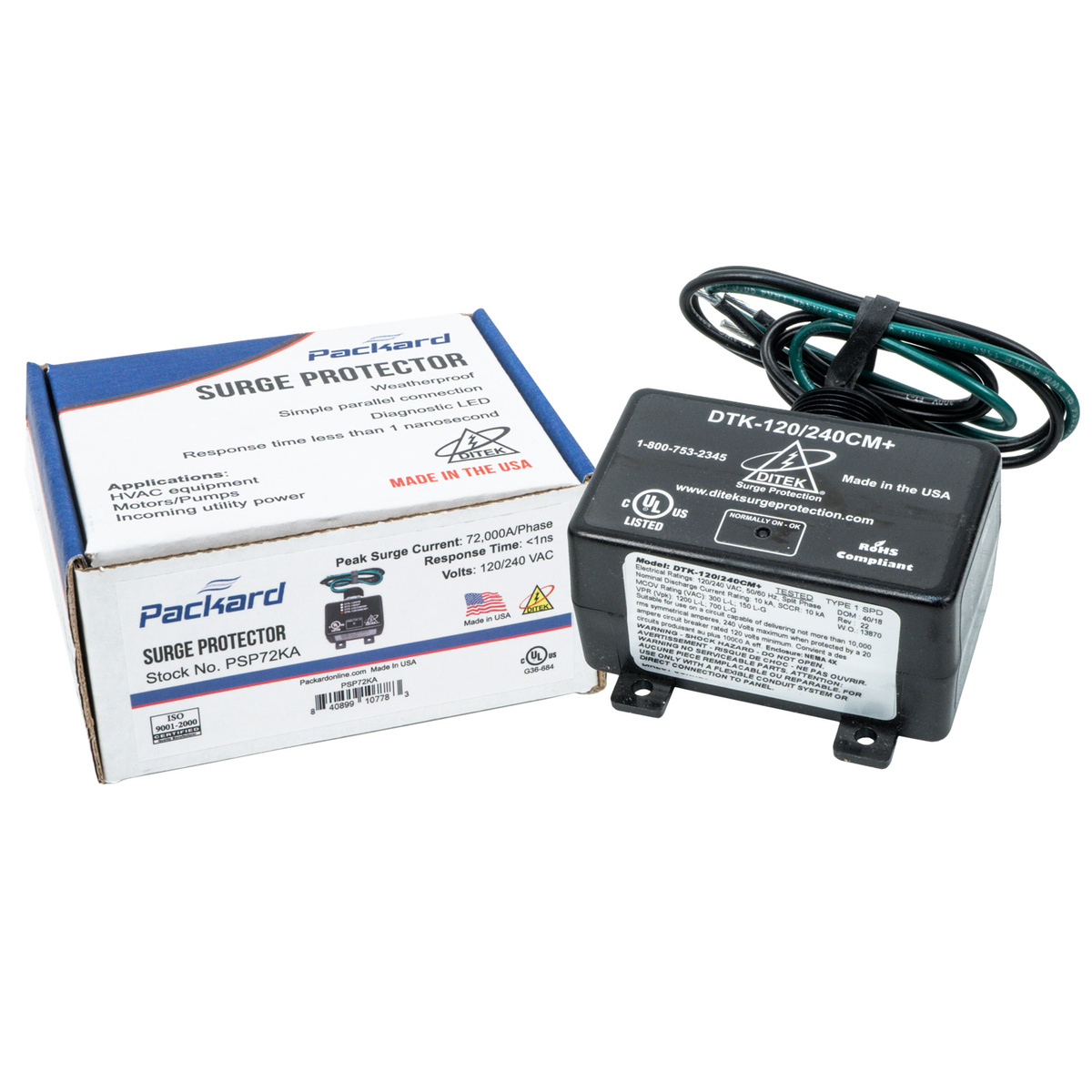
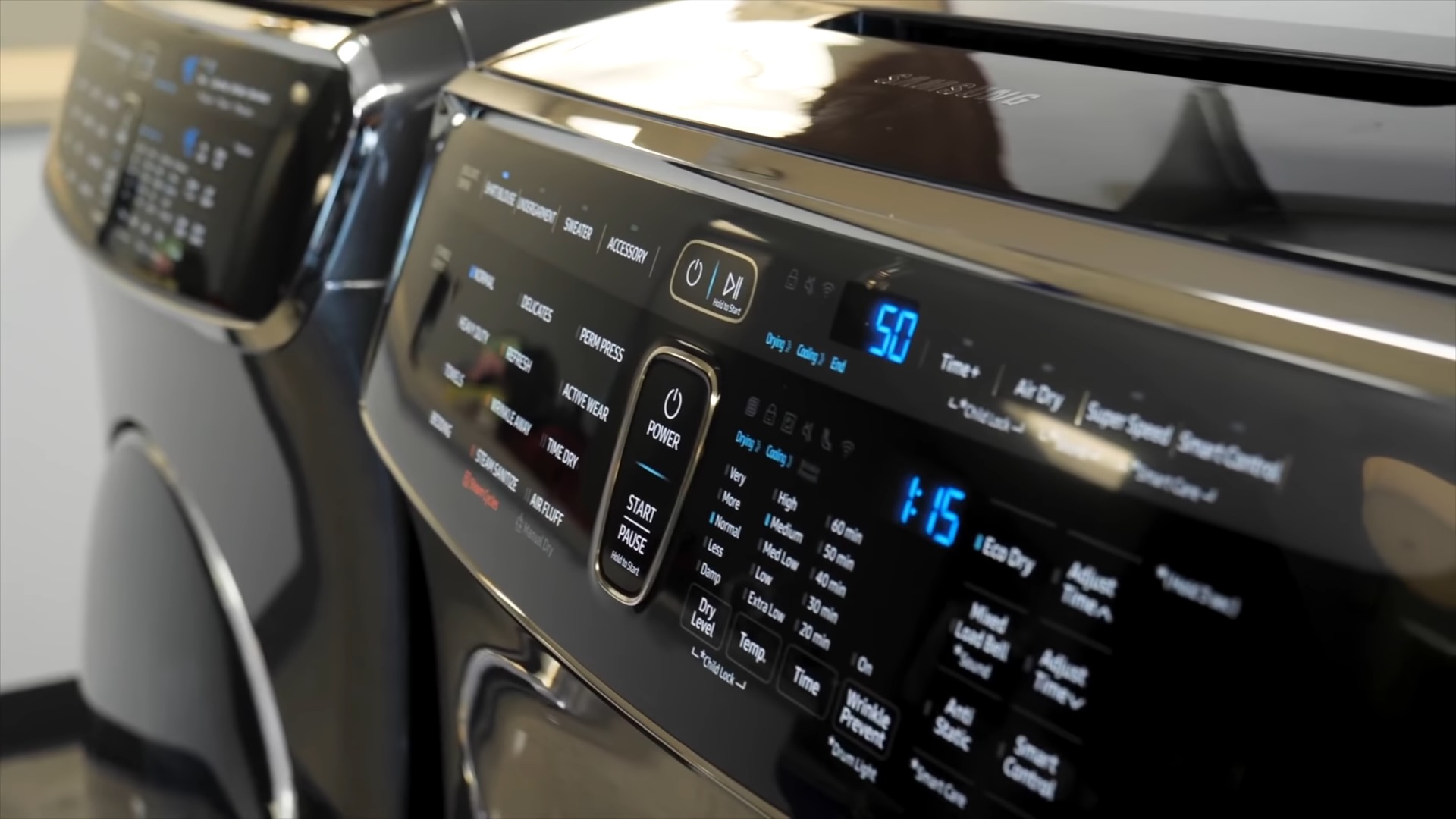

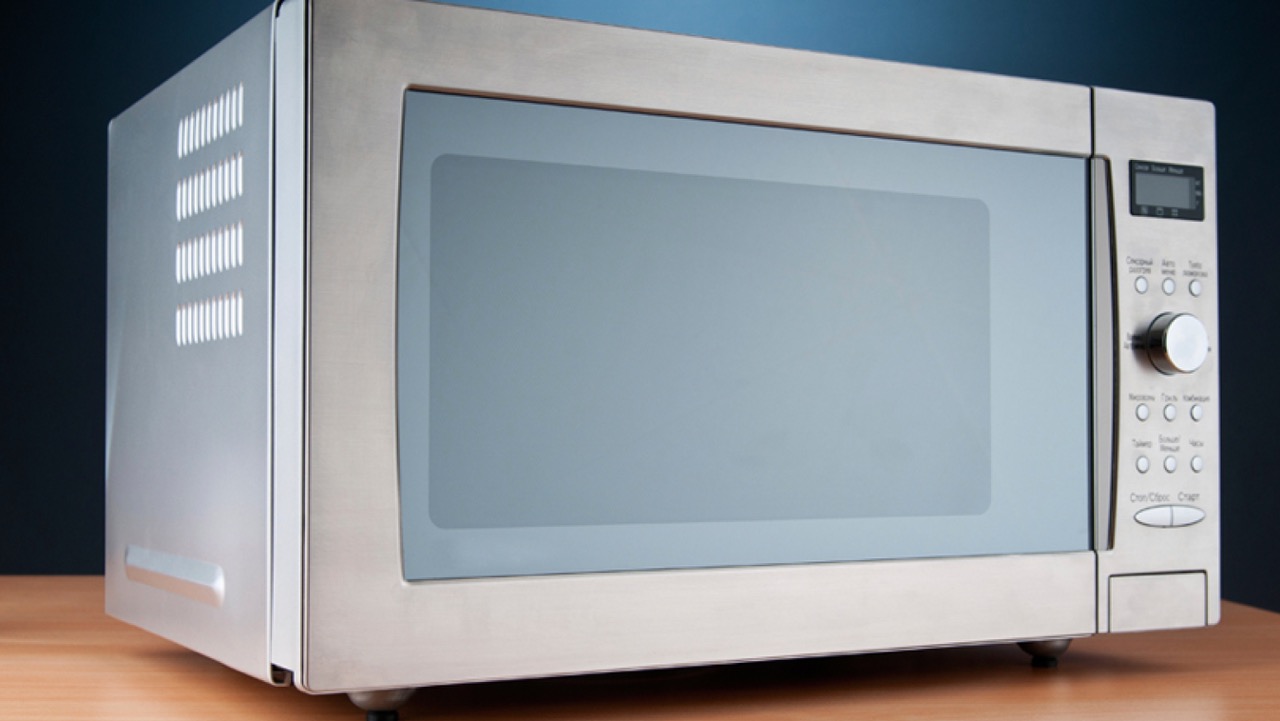
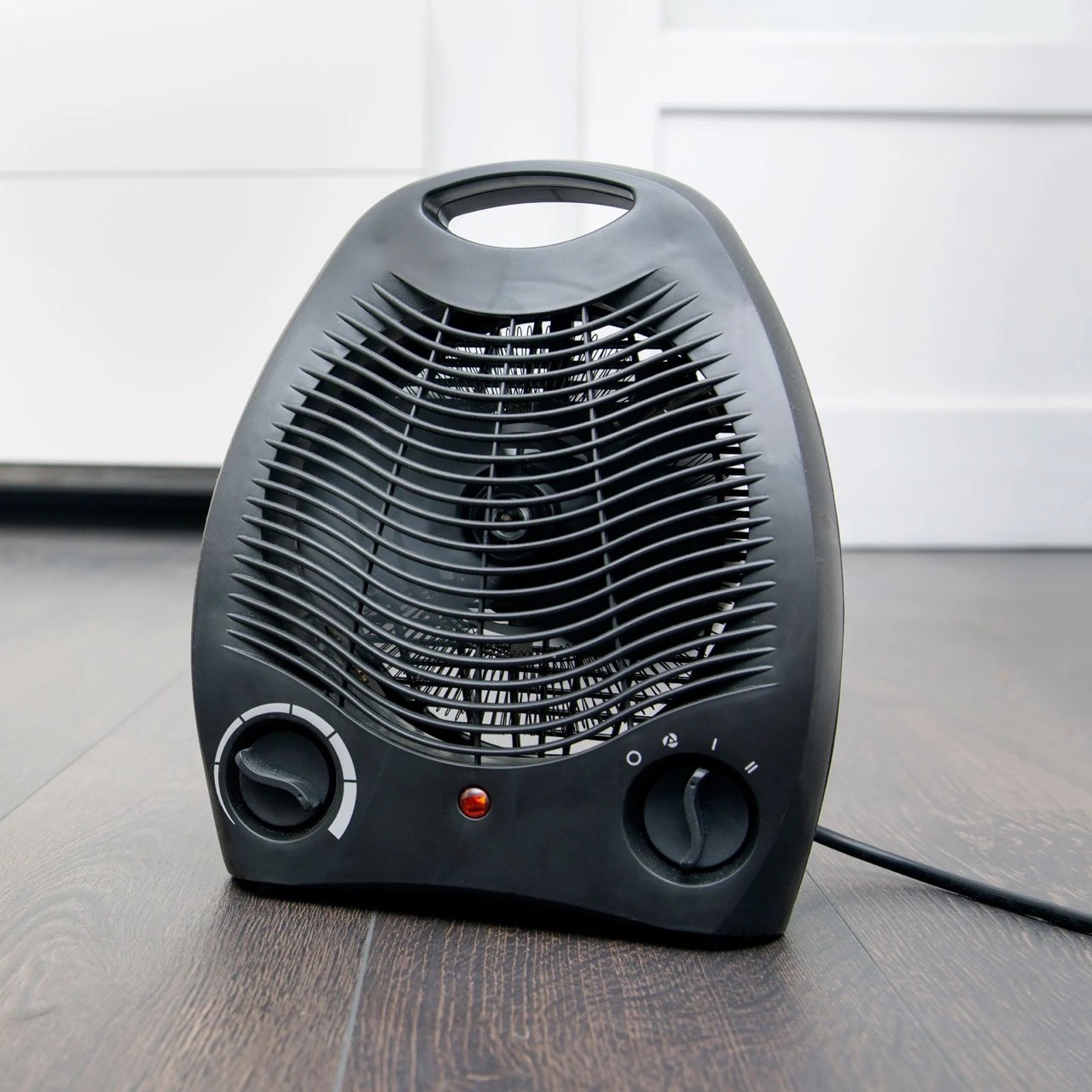
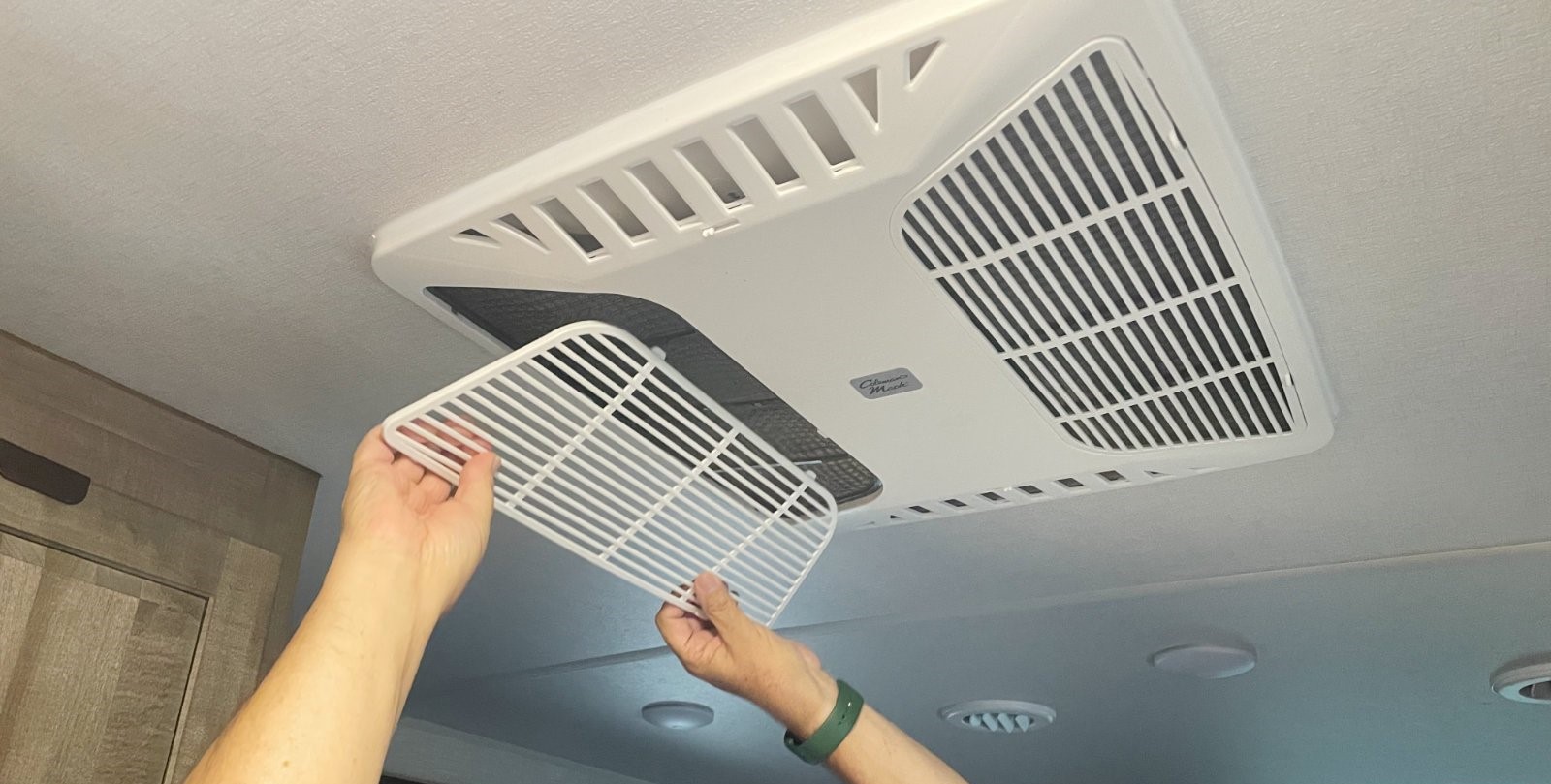



0 thoughts on “How Many Amps Does A Smoke Detector Use”